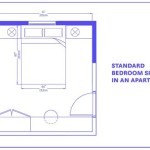Color Combinations For Bedroom Walls: Creating Harmonious and Restful Spaces
The selection of color combinations for bedroom walls is a crucial aspect of interior design, profoundly impacting the ambiance and emotional resonance of the space. The bedroom, primarily intended as a sanctuary for rest and rejuvenation, necessitates careful consideration of colors to promote relaxation, tranquility, and personal expression. This article explores various color combinations suitable for bedroom walls, focusing on the principles of color theory and their practical application in creating visually appealing and functionally restful environments.
Understanding Color Psychology and its Influence on Bedroom Ambiance
Color psychology is the study of how colors affect human behavior and emotions. Understanding these effects is paramount when choosing color combinations for a bedroom. Different colors evoke distinct feelings and associations. For example, blues and greens are often associated with calmness and serenity, while reds and oranges can stimulate energy and passion. Choosing colors that align with the desired mood and function of the bedroom is essential.
Cool colors, such as blues, greens, and purples, tend to be more relaxing and conducive to sleep. These hues can lower blood pressure and heart rate, promoting a sense of tranquility. Warmer colors, like reds, oranges, and yellows, are generally more stimulating and can evoke feelings of warmth and energy. While some individuals might find these colors comforting, they may not be the best choice for those prone to restlessness or insomnia. Neutrals, such as whites, grays, and beiges, offer versatility and can create a calming backdrop for other decor elements. They are also effective at reflecting light, making the room appear larger and more open.
Consider the size and natural light of the bedroom when selecting colors. Smaller rooms often benefit from lighter colors, which can visually expand the space. Rooms with ample natural light can accommodate darker colors without feeling cramped. Personal preferences also play a significant role. The colors chosen should reflect individual tastes and create a space that feels personal and welcoming.
Exploring Popular and Effective Color Combinations
Numerous color combinations can be effectively employed in bedroom design. The choice depends on personal preferences, the desired mood, and the existing decor of the room. Several popular and effective options are frequently utilized by interior designers.
Blue and Gray: This combination offers a sophisticated and calming palette. Blue provides a sense of serenity and relaxation, while gray adds a touch of modernity and neutrality. Lighter shades of blue pair well with lighter grays for a more airy and open feel, while darker blues can be balanced with charcoal grays for a more dramatic and intimate atmosphere. Accents in white or silver can further enhance the elegance of this combination.
Green and White: A harmonious and refreshing combination, green and white evokes nature and tranquility. Green is associated with growth, renewal, and balance, while white provides a clean and crisp backdrop. Different shades of green, from soft sage to vibrant emerald, can be used depending on the desired effect. Textural elements, such as wood or woven fabrics, can add warmth and depth to this combination.
Lavender and Gray: This pairing creates a soft and soothing ambiance. Lavender is known for its calming properties and can promote relaxation. Gray provides a neutral balance and prevents the lavender from being overly sweet. This combination works particularly well in smaller bedrooms, as the lighter shades of lavender and gray can visually expand the space. Accents in silver or cream can add a touch of elegance.
Beige and Brown: A timeless and classic combination, beige and brown offers warmth and comfort. Different shades of beige, from light sand to creamy ivory, can be paired with various browns, from chocolate to coffee. This combination is highly versatile and can be adapted to different styles, from traditional to contemporary. Natural materials, such as wood and leather, complement this palette beautifully.
Peach and Cream: This warm and inviting combination creates a cozy and comforting atmosphere. Peach is a soft and cheerful color that evokes feelings of happiness and relaxation. Cream provides a neutral and elegant backdrop. This combination works particularly well in rooms with limited natural light, as the warm tones can brighten the space. Accents in gold or bronze can add a touch of luxury.
Teal and Gold: For a more dramatic and luxurious feel, teal and gold can be a striking combination. Teal is a sophisticated and calming color that combines the serenity of blue with the grounding qualities of green. Gold adds a touch of opulence and glamour. This combination works well in larger bedrooms, as the darker teal can visually ground the space. Accents in black or white can provide contrast and balance.
Techniques for Implementing Color Combinations Effectively
Successfully implementing color combinations requires careful planning and attention to detail. Several techniques can be employed to ensure a cohesive and visually appealing result.
The 60-30-10 Rule: This is a widely used design principle that suggests allocating 60% of the room to the dominant color, 30% to a secondary color, and 10% to an accent color. This creates a balanced and harmonious visual hierarchy. For example, the walls could be painted a light blue (60%), the bedding and curtains could be gray (30%), and the accent pillows and accessories could be white (10%).
Using a Color Wheel: The color wheel is a valuable tool for understanding color relationships. Complementary colors, which are opposite each other on the wheel, create high contrast and visual interest. Analogous colors, which are adjacent to each other, create a more harmonious and cohesive feel. Triadic colors, which are evenly spaced on the wheel, offer a balanced and vibrant palette. Using the color wheel can help create a visually appealing and balanced color scheme.
Considering Undertones: Every color has an undertone, which is the subtle hue that influences its overall appearance. Understanding the undertones of different colors is crucial for creating a cohesive and harmonious palette. For example, some grays have warm undertones, while others have cool undertones. Pairing colors with similar undertones will create a more unified and balanced look. Paying attention to undertones can prevent clashing or disharmonious color combinations.
Testing Colors Before Painting: It is essential to test paint colors in the actual room before committing to a full paint job. Colors can appear different depending on the lighting conditions and surrounding decor. Painting small swatches of different colors on the walls and observing them at different times of day can help determine which colors work best in the space. Taking this step can prevent costly mistakes and ensure a satisfactory result.
Incorporating Texture: Texture plays a vital role in creating visual interest and depth in a room. Incorporating different textures, such as smooth fabrics, rough wood, or woven baskets, can enhance the overall aesthetic and add dimension to the color scheme. Layering different textures can create a more inviting and comfortable atmosphere. Texture can also help to balance the visual impact of strong or bold colors.
Balancing Warm and Cool Tones: A successful color combination often involves balancing warm and cool tones. Warm colors can make a room feel cozy and inviting, while cool colors can create a sense of serenity and relaxation. Using a mix of both warm and cool tones can create a balanced and harmonious atmosphere. For example, a warm beige wall color can be complemented by cool blue accents, or a cool gray wall color can be balanced by warm wood furniture.
Considering the Existing Decor: The existing decor of the room, including furniture, flooring, and accessories, should be taken into consideration when selecting color combinations for the walls. Choose colors that complement the existing elements and create a cohesive and unified look. For example, if the bedroom furniture is dark wood, lighter wall colors may be more appropriate to brighten the space. If the flooring is a neutral color, more vibrant wall colors can be used to add personality and visual interest.
Ultimately, the ideal color combination for bedroom walls is a matter of personal preference and the desired ambiance. By understanding the principles of color psychology, exploring different color combinations, and employing effective implementation techniques, individuals can create a bedroom that is both visually appealing and conducive to rest and relaxation. Careful consideration of these factors will result in a harmonious and restful space that reflects individual style and promotes well-being.

Colours For Bedrooms Bedroom Ideas By Indigo Paints

Wall Colour Combination Scheme For Beautiful Bedroom Ideas

Best Pink Colour Combinations For Bedroom Walls Beautiful Homes

15 Best Wall Colour Combinations For Bedroom With Images 2025

5 Stunning Colour Combinations For Your Bedroom Walls

Jsw Paints Perfect Bedroom Colours For Better Sleep

Top 30 Two Colour Combinations For Bedroom Walls Indextap Blogs

Top 30 Two Colour Combinations For Bedroom Walls Bhume

Light Two Colour Combination For Bedroom Walls

Teenage Bedroom Colours Paint Ideas For Teenager








